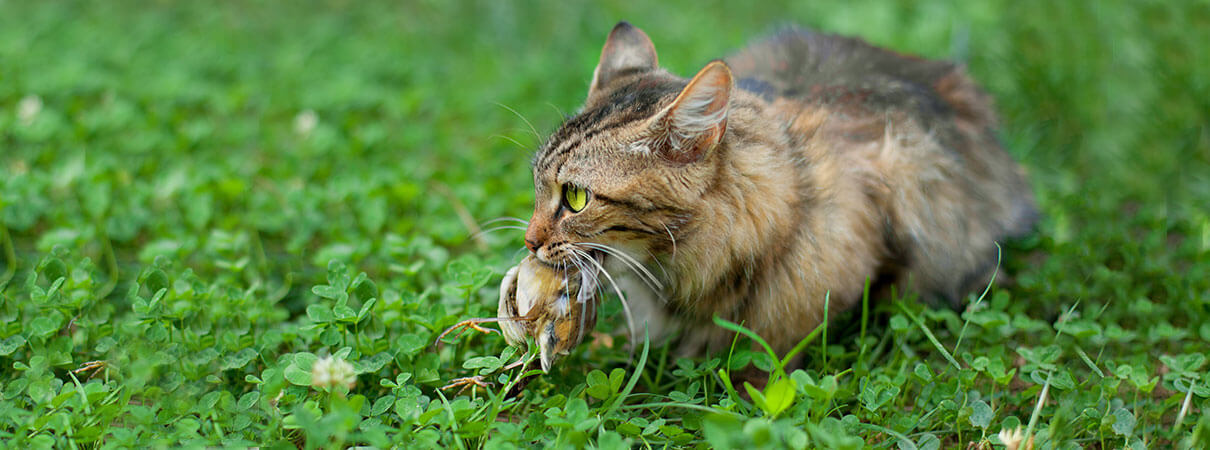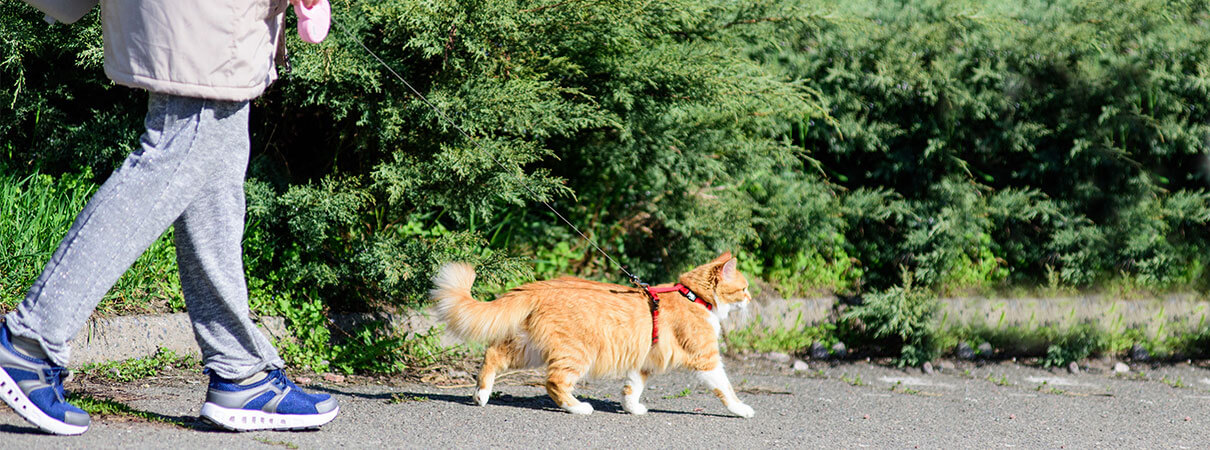It's Time to Treat Cats Like Dogs
Cats. It's the four-letter word of bird conservation.
For over a century, ornithologists have been sounding the alarm about cats and their impacts in the environment. Whether owned, stray, or feral, roaming domestic cats have the capacity — indeed the propensity — to hunt and kill the wild creatures that we value. At least 40 bird species have been driven to extinction in the wild due, at least in part, to cats.
Their predatory instinct, however, does not diminish cats' value as pets. Instead, it means we must be responsible about how we manage our pets, not just for our cats' well-being but also for the welfare of the community around us.

It's estimated that cats kills 2.4 billion birds each year in the United States. Photo by Joel Evans/Shutterstock
Learning these lessons, however, can take time. For my part, growing up in suburban Ohio, I long believed that preventing a cat from running at large was cruel, somehow a perversion of the beautiful and primeval mystery of cats. To me, cats' predatory behavior was “only natural.”
But, like a growing number of cat owners, I began to see things differently. I learned that cats kept indoors live longer, healthier lives, which is why veterinarians strongly advise not letting cats roam outdoors. I learned of the substantial and preventable losses of wildlife caused by cats, and that cats are one of the world's most harmful invasive species. In the United States alone, they are estimated to kill 2.4 billion birds each year.
I experienced these lessons firsthand, sometimes painfully, through my own cats. For example, my favorite childhood cat was struck and killed by a car. I hope other cat owners will not have to learn such lessons the hard way.
Today, I'm proud to keep my cat, Amelia Bedelia, safely contained. I've chosen to protect her and local wildlife by keeping her indoors. Instead of hunting, Amelia Bedelia plays with laser pointers and toys. When she does venture outdoors, she is on a leash or in an enclosure and always supervised.

Keeping cats on leashes helps to protect birds and other wildlife. Photo by Jeremy Bentham/Shutterstock
ABC, through its Cats Indoors program, is helping others to experience the same benefits of keeping cats safely contained. Many of my coworkers also have beloved cats at home, and indoors. We believe that we can have both happy cats and healthy birds!
Although the concept seemed revolutionary to me as a kid, safely containing our pets is nothing new. In fact, the model for success already exists: Only decades ago, domestic dogs frequently ran wild, whether owned or not. Thanks to education and a concerted community effort, permitting pet dogs to roam is no longer acceptable — or legal — in most of the United States. This transition from semi-wild pet to responsibly contained companion animal is precisely what is needed for domestic cats.
It's time to treat cats like we treat dogs.
I'm confident that cats, like dogs, will one day get there, and I hope you will join me in facilitating that transition. Until then, I'm proud of the work ABC and our partners are doing to lead the way to a more sustainable future for birds, cats, and people.
 Grant Sizemore is ABC's Director of Invasive Species Programs.
Grant Sizemore is ABC's Director of Invasive Species Programs.


















































